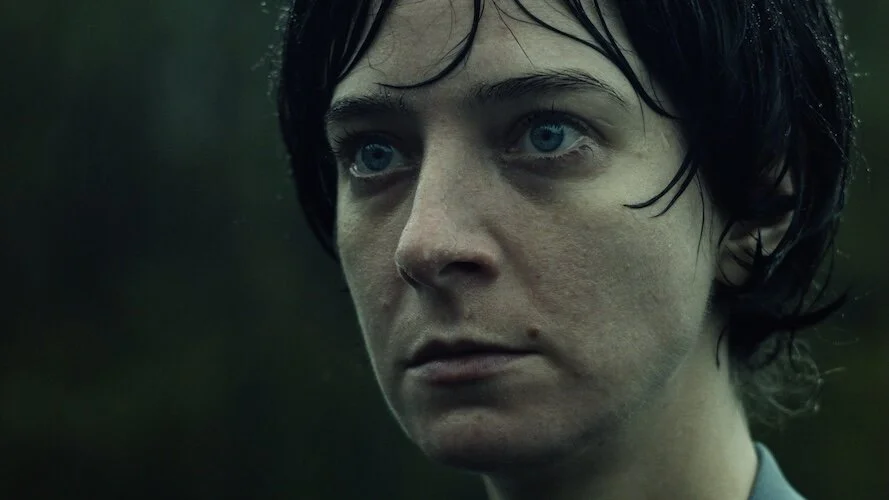Film Review — "Violation"
There’s a bit in this film where two characters joke about penises that look like celebrities. A schlong that embodies Sean Connery, a wiener that resembles Robert De Niro, etc. It’s a rare moment of levity in this grueling picture—and it got me thinking about my own little guy. I’d say mine’s Old Hollywood method actor John Garfield, although I’m not exactly objective. I could ask an old flame, but he’d probably say something snarky like “Peter Lorre.” (I love Peter Lorre, but does anyone want their prick to look like Peter Lorre?) Such frankness toward male privates is one of the ways this rape-revenge thriller sets itself apart. With Violation, co-directors Madeleine Sims-Fewer and Dusty Mancinelli aim to boldly disrupt the standard gaze of this exploitative genre, and they are unyielding in their effort.
You could call rape-revenge flicks an acquired taste. The extreme brutality that usually accompanies these thrillers can be a huge turn-off for a lot of folks, whether they’re a sexual assault survivor or not. However, for many others, films like I Spit On Your Grave are a major source of cathartic release. Everyone’s journey is different, just as taste differs. To some, the idea of watching a woman get savagely defiled to the point of near-death will never sound appealing, but to others the victim’s equally ruthless retaliation that follows makes it worth it.
In Violation, we don’t get an extended, sadistic rape scene. This is one example of Sims-Fewer and Mancinelli tweaking the blueprint when it comes to how this type of story will play out. The assault is not sensationalized or fetishized. The filmmakers only offer tight close-ups; they don’t provide the sort of wide shots that often work to evoke sympathy or pity. This choice to visually limit the inciting rape—while somewhat frustrating because it becomes difficult to fully discern what’s happening—works to cement the POV of the film.
Co-director Madeleine Sims-Fewer plays Miriam, the protagonist of the movie. The film is told entirely from her perspective, and not even her rapist can take that from her. So, the decision to only show the violation of her body in this fragmented style serves a practical purpose because she was attacked while mostly unconscious and therefore lacked the mental wherewithal to comprehend every excruciating moment in real time. This, plus the fact that Miriam’s psyche was already marred prior to the assault, also motivates the non-chronological timeline.
Despite it being narratively justifiable, the jigsawing of the plot nevertheless renders the film muddy. It’s disorienting in a way that’s more confounding than illuminating. Non-linear storytelling is most effective when it’s used to subvert expectations through dramatic irony. And while there’s some of that happening, I’m not entirely convinced that the unfolding of this tale would have any less impact if the scenes had been arranged in order. I understand the artistic intent—placing the audience in Miriam’s shattered mind and forcing us to put the pieces together too—but is the directorial choice to distance the viewer from the pulse of the film more helpful or more harmful here?
As Miriam, Sims-Fewer delivers an engrossing performance. Her anguished path to retribution is unique among rape-revenge heroines because Miriam’s journey is not one bent on catharsis, in yet another attempt to flip the script. Even though we are on her side, we’re not exactly cheering for Miriam in quite the same way we do other protagonists from this genre, since she herself struggles with whether murder is the correct kind of redress for the situation. Sims-Fewer demonstrates an incredible amount of psychological acrobatics, and the physical side of her performance veers into visceral territory at times.
The bulk of the film’s bodily demands, however, fall on Jesse LaVercombe. He plays Dylan, Miriam’s brother-in-law and violator. In an average rape-revenge thriller, the onus of showing skin lies with the (usually female) victim. But since the assault is shot in the fashion it is, LaVercombe ends up exhibiting disproportionately more flesh than his co-star. In fact, he spends a sizable portion of this film completely naked with a quivering cock. And, as yet another spin on the regular model, it’s refreshing as hell. Sims-Fewer and Mancinelli knew precisely how to refigure the power dynamics and maintain Miriam’s POV. Props to LaVercombe for being so willing to play ball.
Dylan’s nakedness is not necessarily meant to be erotic, but the candor of his nudity is notable. In addition to its narrative significance and its usage as a reversal of gender customs, it provides another entry in the recent movement to normalize the male form on screen. For decades, female bodies have been used in male-centric movies to advance the arcs of men; it’s always been more common for a woman to bear all. But it seems a tide is turning. And it’s not merely a matter of evening the score, it’s about acknowledging that male bodies play an important role—for better or worse—in female stories, and to skirt the issue does a disservice to characters like Miriam. Violation is her story, and the filmmakers reframed a hot-button genre so it could be told unflinchingly through a female gaze.




